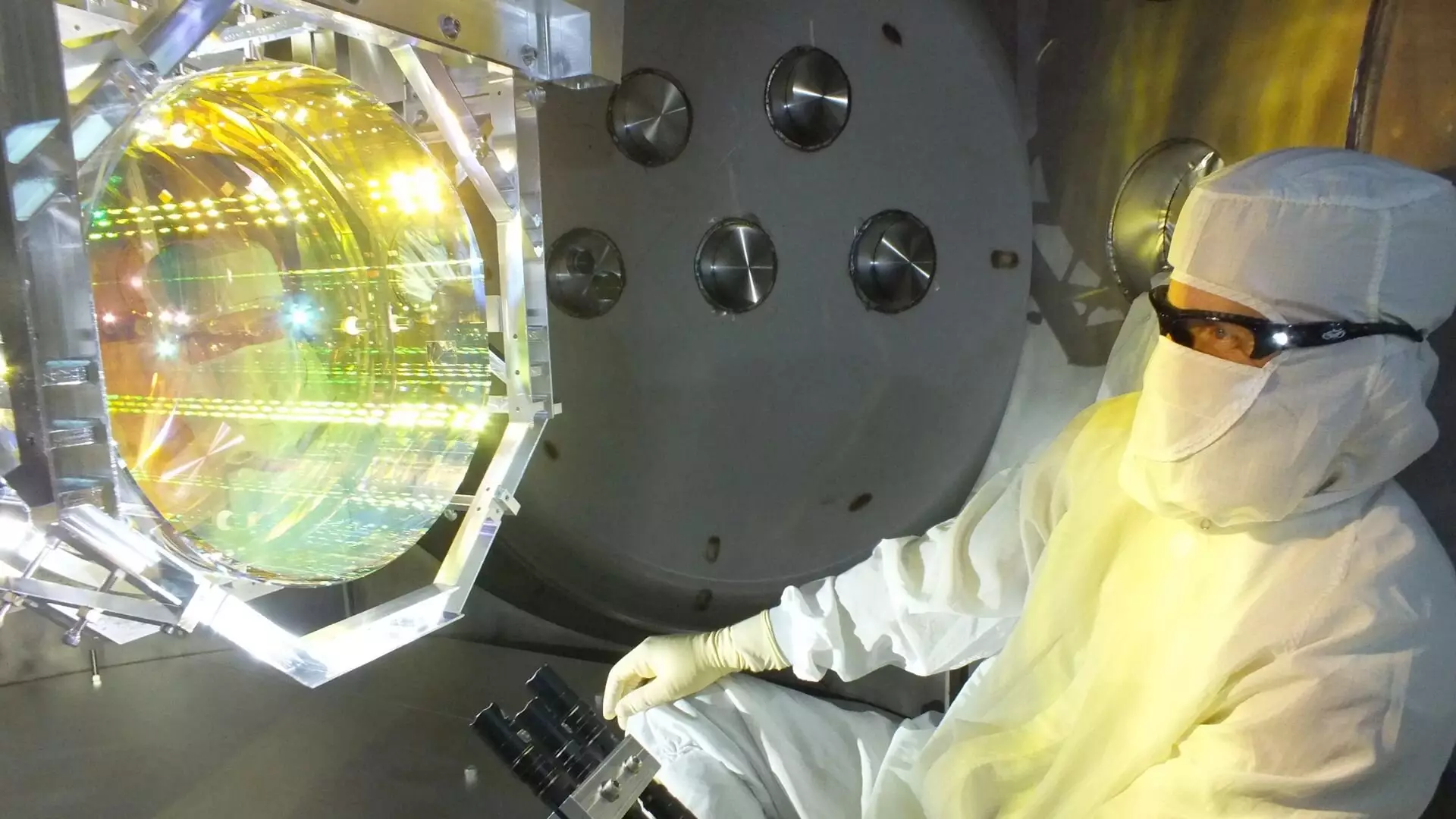Dark matter continues to be one of the most profound mysteries in astrophysics, constituting nearly 30% of the universe’s observable mass yet evading direct detection. Traditional forms of observation are rendered ineffective as dark matter neither emits nor absorbs light, leading scientists to infer its existence solely through its gravitational effects. The motion of galaxies and galaxy clusters provides indirect evidence for dark matter, but its fundamental nature remains obscure. New research now suggests that gravitational wave detectors like the Laser Interferometer Gravitational-Wave Observatory (LIGO) may pave the way to unravel this cosmic enigma.
A recent study featured in Physical Review Letters, led by Dr. Alexandre Sébastien Göttel from Cardiff University, explores the application of gravitational wave detectors in searching for scalar field dark matter. This specific dark matter candidate consists of ultralight scalar bosons, which possess unique properties including no intrinsic spin and weak interactions with conventional matter. These attributes allow them to manifest wave-like behaviors, creating stable formations capable of traversing the cosmic landscape without disintegration.
Dr. Göttel, who transitioned from particle physics to gravitational wave analysis, emphasizes the potential of LIGO’s capabilities to detect these elusive forms of dark matter. “Some theories suggest dark matter behaves more like a wave than a particle. These waves would cause tiny oscillations in normal matter,” he explained, highlighting the contextual relationship between gravitational waves and scalar field perturbations.
Gravitational wave detectors are ingeniously designed to identify minute changes in spacetime caused by passing gravitational waves. LIGO accomplishes this through an ingenious setup involving two perpendicular 4-kilometer-long arms, wherein a single laser beam is split, sent down both paths, and then recombined at a central point. The distinctive interference pattern generated reveals the presence of gravitational waves based on how these waves stretch and compress spacetime. However, to leverage LIGO’s capabilities for detecting scalar field dark matter, researchers had to delve into how these field oscillations could subtly affect the instrument’s fundamental parameters.
Recent findings indicate that scalar field dark matter could induce oscillations at an atomic scale, thereby modifying the electrodynamic constants that govern interactions in the LIGO apparatus. Dr. Göttel expounds on this complexity, stating, “The dark matter oscillations fluctuate alongside the electromagnetic field … affecting every single atom in the universe,” thus necessitating a rigorous analysis of the impacts on both beam splitters and test masses used in the experiment.
The research team employed data from LIGO’s third observation run, extending their search frequencies to cover a range from 10 to 180 Hertz—significantly enhancing sensitivity in tandem with their theoretical models. Utilizing simulation software, they examined how scalar field dark matter could influence LIGO’s output, crafting a detailed framework to identify predictive signals in the data.
Despite their extensive efforts, the team did not uncover compelling evidence for the existence of scalar field dark matter in the analyzed data. Nonetheless, they succeeded in establishing new upper limits on the interaction strength between dark matter and the various components of the LIGO system, increasing the previously known values by a staggering factor of 10,000.
“We are the first to account for additional differential effects in the test masses, which are significant at low frequencies,” Dr. Göttel noted, underscoring the innovative methodological advancements of the study. The implications suggest that small modifications to core optical components—like mirror thickness— may yield substantial enhancements in detection capabilities.
As the landscape of astronomical research evolves, the prospect of utilizing gravitational wave detectors for dark matter exploration appears promising. The methodologies introduced in this recent study not only set a benchmark for future investigations but also open new avenues for theoretical exploration. As LIGO and future detectors become even more advanced, researchers may find themselves equipped to challenge existing paradigms regarding dark matter, possibly ruling out entire categories of scalar field dark matter theories.
While the quest for understanding dark matter continues to elude definitive conclusions, the innovative use of gravitational wave detectors represents a paradigm shift in research methodologies, potentially leading to groundbreaking discoveries that could unlock one of the universe’s most enduring secrets.


Leave a Reply